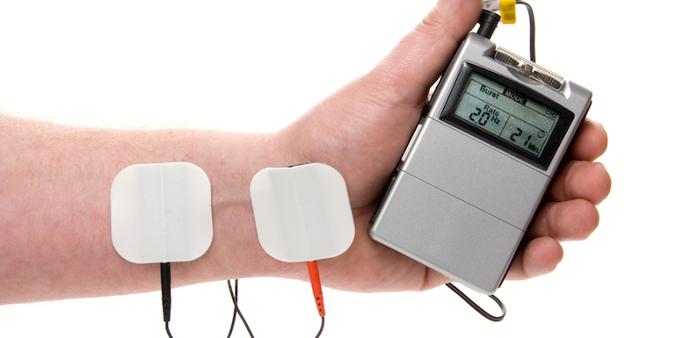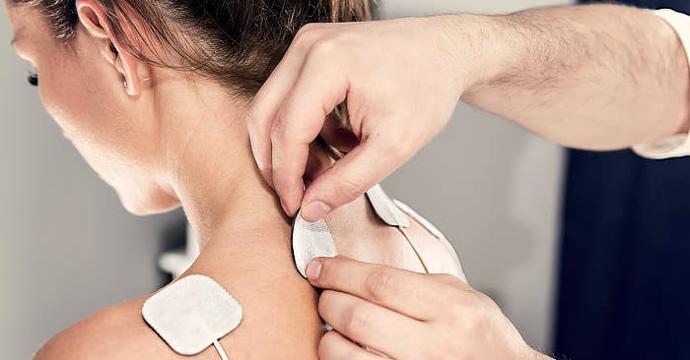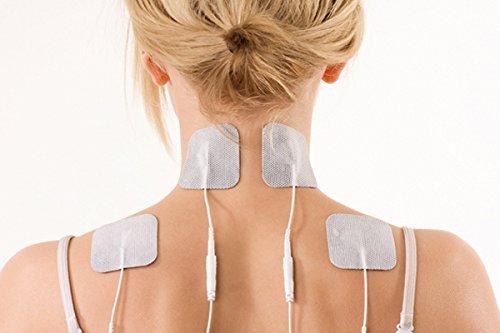TENS Unit

TENS units may help treat the following symptoms:
2. labor pain
3. postoperative pain
4. joint pain
5. neck and back pain
1. endometriosis
2. arthritis
3. sports injuries
4. multiple sclerosis
5. fibromyalgia
6. painful diabetic neuropathy
7. spinal cord injury
Intensity: A dial enables you to adjust the intensity of the electrical stimulation.
Frequency: The frequency of electrical pulses refers to the number of pulses per second. High-frequency (HF) pulses range between 80 and 120 pulses per second and may offer comfort in the event of acute pain. Low-frequency (LF) pulses range between 1 and 20 pulses per second and may be used for the elimination of chronic pain.
Duration: The duration of the pulse is the number of microseconds it takes for the current to enter the nearest part of the skin during each pulse.
Benefits

Even though it is safe for most people, doctors recommended that you should avoid TENS treatment unless a doctor suggests its use in your case.
This recommendation applies to the following people:
Pregnant women: Pregnant women should avoid using TENS in the abdominal and pelvic regions. People with epilepsy: Applying electrodes to the head or neck of people with epilepsy may induce seizures. People with heart problems. People with a pacemaker or another type of electrical or metal implant.
Research has not yet verified whether TENS is a valid treatment for pain. One research indicated that TENS therapy provided temporary pain relief for people with fibromyalgia while the machine was used. There is inadequate scientific evidence to support TENS' effectiveness, but there are many people who find this to be an effective tool.
Research has demonstrated that TENS units can be used every day at the same frequency and intensity to develop a tolerance to the therapy. People who develop tolerance to units will no longer feel the same level of pain relief that they did before the first treatment. To prevent this from occurring, people should intermittently alternate between low and high-frequency TENS during treatment. Alternatively, they can gradually increase the intensity or duration of TENS on a daily basis.
Stimulation intensity
The range of intensities of the electrical stimulation may account for some of the variations in research findings. Findings from a 2014 review indicated that HF TENS is more successfully treating pain than LF TENS is. In fact, several studies are finding that LF TENS is unsuccessful. Since HF TENS appears to be a more effective remedy, experts advise that patients use the highest intensity TENS machinery that they can tolerate.
Electrode placement
It may be more effective for people to place the electrodes for TENS at one's acupuncture points to feel the stimulation. Acupuncture is a science that uses the vascular nodes acupoint to induce physical or physiological reactions. Specialists believe that this procedure generates endorphins.
How long does pain relief last?

Research suggests that TENS therapy may help alleviate some pain, but the manner in which this is carried out depends upon certain variables, such as the affected region as well as the intensity of the treatment. Knowing these factors can help people carry out TENS therapy more proficiently. Most individuals can use a TENS unit safely, and few will experience side effects. Nevertheless, it is wise to make an appointment with your doctor before using TENS either as a treatment or in combination with additional methods of pain treatment.
TENS units are available for purchase at Pro Therapy Supplies. You can visit our website or call us at 7870-441 9808.

